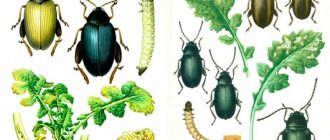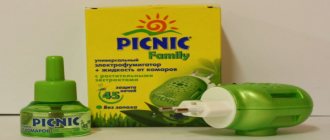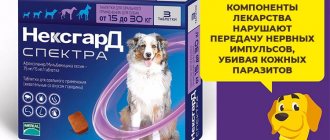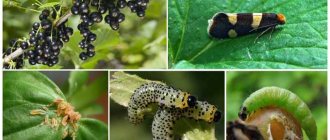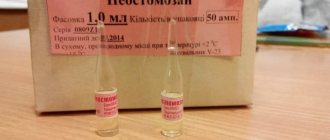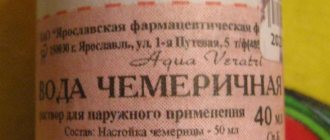Since ancient times, people have used the wonderful properties of tar for a variety of purposes. Several centuries ago, our ancestors came to the conclusion that solutions that contain it protect gardens and vegetable gardens from pests. With the development of the chemical industry, insecticides replaced natural tar preparations, but many still continue to trust a natural product that does not cause any harm to either plants or people.
For what purposes do gardeners use tar soap?
It is used to disinfect the soil by applying home-prepared solutions under the roots, and also to destroy harmful insects by spraying. But such products must be prepared and used in accordance with what kind of pests you are going to get rid of. A low concentration will not kill insects, but too high a concentration will accumulate in plants and fruits, as a result of which it will enter the human body.
Advantages and disadvantages of tar soap
The tar that is part of the soap is prepared from birch bark, knots and chips. This substance is natural, safe for people and warm-blooded animals, which is why experts recommend it for pest control in gardens and vegetable gardens. The smell of tar does not kill insects, but simply drives them away from the area; only slugs are left with burns from this substance. Rodents, by the way, are also afraid of him. One of the positive aspects is that tar is not addictive, so you can use it regularly and get positive results.
Having left the land after treatment with a solution of tar soap, the pests will not return for three weeks to two months, that is, you will have to carry out the treatment infrequently, and all you need for this is an ordinary spray bottle.
The disadvantage of this product is that the tar smell repels not only pests, but also pollinators, so if you have bees, it is better not to use this method. It is also better not to subject indoor plants to this treatment during flowering. Do not use the product on greens or ripening fruits, otherwise they will smell like tar.
There is no point in combining the product with industrial fungicides and insecticides, since the tar components will lose their effectiveness. And one more important point. If you suffer from allergies, avoid tar soap, as it contains allergens.
Proven means
An alternative to folk remedies is modern pharmaceuticals. And among them today it is easy to find safe and effective products that are suitable for children and adults. Shampoo, spray, and lotion “PARANIT” help get rid of lice without damaging your hair. "PARANIT Sensitive" is approved for use in children over one year old, pregnant and lactating women. The preparations are easy to apply, do not have an unpleasant aroma and effectively kill lice and nits. At the same time, the parasites do not develop resistance, that is, the products, even with repeated use, help to successfully fight lice and nits.
Choose convenient and safe means to combat head lice!
Ways to use tar soap
This natural product can be used in different ways. Everything here should depend on the goals. To scare away hares, cats, moles, flies and insects that are harmless to plants, hang tin cans with a cloth soaked in a solution of tar soap around the property. As the material dries, it must be changed. An alternative to this method is stakes with rags soaked in tar solution wrapped on top. The distance between pegs must be at least two meters. The smell of tar is not washed away by rain, and even if you don’t feel it yourself, pests will.
Hares often damage the bark of trees in vegetable gardens. To prevent this from happening, paint the trunks with a lime solution with the addition of tar soap. As a result, the bark will no longer attract not only rodents, but also insects. In ten liters of water, dilute a kilogram of whitewash and a grated bar of soap, which, by the way, can be replaced with 50 milliliters of natural tar. If there is an infestation on the land, mulch it. Dilute ten milliliters of this product in ten liters of water and soak the sawdust in it.
For universal spraying, grate 100 grams of tar soap on a fine grater and mix with 300 grams of wood ash. Add the mixture to a bucket of hot water and leave to steep for one hour. After this time, stir the mixture and spray the plants with it from a spray bottle.
The solution is also suitable for processing planting material of root crops. But in this case, it is better to replace soap with natural tar. Ten liters of water will require 15 milliliters of this product. Immerse the seedlings in the emulsion for about five minutes, and then proceed to planting.
To water the holes, you can use a disinfecting suspension. How to cook it? Dissolve 50 grams of tar soap in five liters of water. Before planting potatoes, pour one glass of this product into the hole. It is recommended to irrigate root crops, including onions, immediately after sowing and this procedure should be repeated after 15 days. In this case, one square meter of bed will require a liter of solution.
Fighting aphids
If there are aphids on your plot of land, then you can defeat them by preparing a “medicine” from tomato tops with the addition of tar and laundry soap. Place four kilograms of tops in a bucket, fill it with ten liters of water, add 50 grams of grated laundry soap and let it brew for five hours, and then simmer the mixture for half an hour over low heat and add 50 grams of grated tar soap into the liquid. Wait for the broth to boil and remove the bucket from the heat. When the mixture has cooled, spray the plants with it.
If aphids have infected fruit trees, then you can achieve maximum effect using the following solution. Dilute 60 grams of tar soap in ten liters of water. No need to spray. Pour the product into small wide-necked bottles and hang them on tree branches. After some time, not a trace of the aphids will remain. To avoid this problem again, periodically refresh the contents of the bottles. And if in late autumn you soak sawdust with such a solution and scatter it in the tree trunk area, you will drive ants away from the area.
A solution of tar soap and ash will help you get rid of aphids on fruit bushes. Dissolve half a kilogram of ash in a bucket of boiling water, add 50 grams of crushed garlic, and when the liquid has cooled, add 50 grams of crushed tar soap into it. Treat the tops of berry bushes with this product. This procedure can be performed only after they have finished flowering.
Traditional methods against aphids
Traditional methods of combating aphids have already proven their effectiveness. Folk remedies, unlike chemicals, are good because they do not harm the environment and humans. You can use soda, laundry soap, and ash against aphids.
Ash and soap
Ash saturates the soil with nitrogen and helps reduce acidity levels. There are several ways to make a solution:
- Pour three kilograms of ash with hot water and close the lid. This mixture must be left for 48 hours. Pass this mixture through cheesecloth. Add three tablespoons of liquid soap.
- Mix 10 liters of water with 1.5 kg of ash. Add 50 grams of soap there. Leave the mixture for a day.
- Grind 300 grams and pour boiling water. Heat for 25 minutes. Add 10 liters of water. Add a piece of laundry soap, first grate it.
Read also: How to get rid of dodder in the garden: chemistry and folk remedies
These methods are effective for pest control. Spraying is carried out in calm weather. If there is precipitation, postpone spraying. Water the leaves with the mixture or wet them with a sponge.
For prevention, you can use dry ash or mix it with shag or tobacco dust in a 1:1 ratio.
The familiar soda provides an effective fight against various bacteria. Soda is called “divine ash.”
Baking soda promotes plant growth and increases productivity. Baking soda should be used along with soap because soap allows the divine ash to stick to the leaves and stems. The solution can be prepared in the following ways:
- 300 grams household dissolve soap in a liter of water at room temperature. Add a tablespoon of baking soda. Then add the rest of the water. A bucket of water will require 10 tablespoons of baking soda.
- Dissolve 40 grams of laundry soap in a liter of water. Then mix the resulting mass with 2 tablespoons of soda. Add 1 teaspoon of iodine to the resulting mass. Add 9 liters of water. As a result, you will get a bucket of solution.
- The pungent smell of garlic encourages aphids to leave the inhabited area. Chop a glass of garlic and mix it with a bucket of warm water. Leave the resulting mass for 6-12 hours. Add 10 tablespoons of baking soda and 100 grams of soap.
Spray the plants with any soda solution using a sprayer. The treatment should be done several times, the interval between treatments should be at least a week.
Laundry soap
Experienced summer residents advise using laundry soap to control pests, since it does not contain dyes or fragrances.
In addition to laundry soap, you can safely use tar soap. The following solutions are suitable for killing aphids:
- Dissolve half a glass of laundry soap in a liter of warm water, which you first pass through a grater. You will get foam. It is this foam that should be used to treat the affected areas.
- Dissolve soap and oil in a 1:1 ratio in warm water. It is recommended to use vegetable oil. It is recommended to spray trees and bushes with this mixture.
- Nicotine repels pests. Laundry soap should be mixed with tobacco and warm water.
An excellent remedy against aphids is vinegar. It is recommended to use mixtures with vinegar 2-3 times. Using vinegar you can make a solution of the following type:
- 1 tablespoon of vinegar should be mixed with a liter of warm water. Using this mixture, it is necessary to spray the affected areas.
Iodine and milk
I used iodine and milk to save my roses. This method is best suited for controlling aphids on roses. Mix 100 ml of milk with iodine (1/2 bottle). Add a liter of water to the resulting mass. Mix well and use a sprayer to apply the solution to the bushes.
Mustard repels many garden pests, including ants and aphids. Mix 100 grams of dry matter with a bucket of water (10 liters). Spray the plants when aphids are detected until the pests disappear.
Tar soap against the Colorado potato beetle
The Colorado potato beetle is considered one of the most common pests on land. It's easy to get rid of it. Dissolve a bar of tar soap in eight liters of warm water and spray the affected plants with this solution from a spray bottle. To achieve maximum effect, perform treatment during the period of greatest solar activity. If it rains more often, repeat the procedure as often as possible. This method is suitable not only for killing beetles, but also for preventing them.
Tar soap for ants
Ants are hard workers, for which they are “respected,” but they contribute to the spread of aphids throughout the land and often damage the crop, so you also need to fight them, and tar soap will help you with this. For these purposes, a solution is prepared from it and poured into anthills or sprayed on damaged plants.
Mix the following ingredients: 25 grams of baking soda, the same amount of crushed soap, ten grams of garlic, two liters of water. Use as directed after all ingredients are completely dissolved.
Tomato tops
A proven, highly effective remedy for aphids is tomato tops. A decoction based on it can be successfully combined with infusions of garlic and onion peels.
Tomato tops are pre-dried in the open air under a canopy. Then it is crushed, placed in a small saucepan or bucket (depending on the required processing volumes), filled with clean water and put on fire. After the mixture comes to a boil, cook the tomato tops for 30 minutes over low heat.
The resulting concentrate is filtered and diluted with clean water in a ratio of 1 to 5. Grated laundry soap will further strengthen the composition.
It is no secret that aphids are spread throughout the area by ants, which, in turn, feed on the sweetish secretions of these pests. Mustard powder will help drive them away from the area. Scatter it in places where ants are most active, on their paths. Additionally, you can make a bedding around the plant that needs to be protected from aphids.
Read also: Weeds in the garden: photo titles
You can also prepare a mustard solution by mixing 100 g of powder with 10 liters of clean water. “Charge” the sprayer with it and treat the infected plants.
Pest Prevention
To prevent the spread of aphids and other insects in the garden, prepare an alcohol solution. Dilute 40 grams of grated tar soap in one liter of water, add 40 milliliters of pure alcohol and spray the plants. The mixture of alcohol and tar smells acts as a deterrent, but the disadvantage of the product is its limited effect, so you will have to repeat the procedure.
Here is another recipe for an effective universal remedy. Grind 200 grams of dry tobacco leaves into powder, place them in a bucket along with two chopped hot peppers, add ten liters of water and leave for 24 hours. The next day, add 40 grams of wood ash and tar soap.
Insect tar
Plants are treated against insect pests with a tar suspension by watering, soaking in mulch and spraying. Treatment of certain crops against specific types of pests is carried out as follows:
- Potatoes and other nightshades from the Colorado potato beetle - a suspension of 10 ml of tar and 40 g of soap. Application rate – until a wet film forms on the leaves without dripping drops. Processing frequency is 2 weeks. Frequency of treatments – without limitation as needed.
- Carrots from flies and psyllids - twice before pouring root crops (July and August) water under the root with a suspension of 1 tbsp. l tar and 20 grams of soap per 10 l of water. Watering rate is 100-200 ml per plant.
- Currants and gooseberries from moths and flower beetles - before flowering, spray with a suspension of 10 ml of tar and 30 g of soap. After processing, odor emitters are placed in the bushes, see above.
- The same, from sawflies - a suspension of 40 ml of tar, 1 tsp. wood stove ash and 100 g of soap. A bucket of working solution requires 2 liters of mother liquor, see above, 50 g per 1 liter. Spray treatment; frequency 2 weeks during the season.
- Fruit from codling moths - at the end of flowering after the pollinators have left, the crowns and trunk circles are sprayed with a suspension of 10 ml of tar and 30 g of soap. Consumption rate – 1 liter per 1 sq. m of crown and 2 liters per 1 sq. m of soil. After spraying, odor emitters are hung in the garden.
- Pumpkin from the sprout fly - shoots half a palm high are watered with a suspension of 10 ml of tar per 10 liters of water. Watering rate – 1-1.5 liters per 1 m of bed
- For phytophagous flies (cruciferous flies on cabbage, radishes, etc.) - soak sawdust with a suspension of 10 ml of tar per 10 liters of water and mulch the rows with it. Odor emitters are additionally installed on cabbage to prevent whites.
Note: on using tar against cabbage pests, see also the video below:


